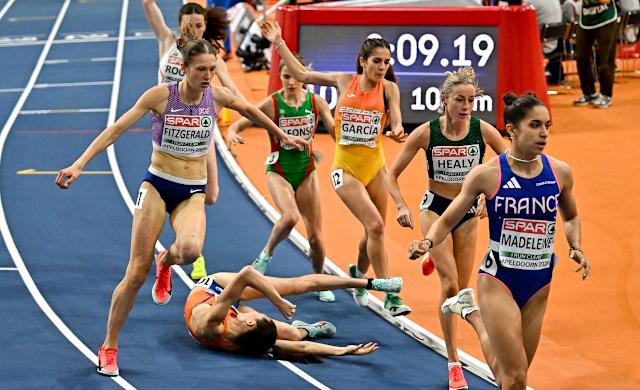very year, World Stroke Day is marked on October 29 to raise awareness about the importance of stroke prevention, early recognition, and prompt response. This annual observance serves as a global reminder of the devastating impact strokes have on millions of lives and underscores the need for proactive lifestyle changes. In an inspiring event this past Sunday, Apollo BGS Hospitals organized a special yoga session near the Kote Anjaneya Swamy Temple, right by the iconic North Gate of Mysuru Palace, as part of the World Stroke Day commemoration. The session was designed to spotlight yoga’s role in promoting brain health and reducing stroke risk, aligning with the broader goals of World Stroke Day to educate the public about stroke prevention and management.
Understanding World Stroke Day: A Mission to Combat Stroke’s Global Impact
World Stroke Day was established by the World Stroke Organization to address the alarming rates of stroke worldwide and to educate communities on identifying warning signs, preventive measures, and the necessity of swift medical intervention. Strokes are one of the leading causes of death and long-term disability globally, affecting individuals across all demographics. In India, approximately 1.5 to 2 million new stroke cases are reported each year, with many going untreated due to lack of access to healthcare facilities.
The theme of World Stroke Day emphasizes “FAST” awareness—an acronym standing for Face, Arms, Speech, and Time—to help individuals quickly identify stroke symptoms and seek urgent medical help. FAST awareness has proven instrumental in saving lives by enabling quicker responses, but education alone isn’t enough. Lifestyle adjustments, regular health monitoring, and preventive practices play vital roles in reducing stroke risk, which is why activities like the yoga session at Mysuru Palace are so impactful.
The Importance of Preventing Strokes: Risk Factors and Warning Signs
Preventing strokes begins with understanding and addressing the risk factors that contribute to this life-altering event. Strokes often occur when blood flow to the brain is interrupted or reduced, causing brain cells to die due to lack of oxygen. Common risk factors include high blood pressure, obesity, smoking, diabetes, and stress—all of which can be managed through lifestyle changes and regular medical check-ups.
KeyStroke Warning Signs (FAST)
- Face: Sudden drooping or numbness on one side of the face.
- Arms: Inability to lift one or both arms.
- Speech: Slurred or garbled speech.
- Time: If these symptoms appear, it’s critical to act fast and seek emergency help.
Nine Powerful Tips to Improve Brain Health and Lower Stroke Risk
Embracing a healthier lifestyle can drastically reduce the risk of strokes. Here are nine essential practices that help protect brain health and lower stroke risks.
1. Follow a Heart-Healthy Diet
A diet rich in antioxidants, fiber, and healthy fats promotes cardiovascular health and helps prevent strokes. Incorporate foods like leafy greens, berries, nuts, and fatty fish to boost blood flow to the brain, nourish brain cells, and manage cholesterol and blood pressure levels.
2. Stay Physically Active
Engaging in regular physical activity, such as walking, swimming, or cycling, strengthens the heart and improves blood circulation. Physical exercise also supports mental well-being by releasing endorphins and enhancing brain plasticity, reducing the risk of cognitive decline.
3. Maintain a Healthy Weight
Excess weight is a known risk factor for stroke, as it often leads to high blood pressure, high cholesterol, and diabetes. By adopting a balanced diet and staying active, maintaining a healthy weight becomes easier, ultimately lowering the risk of stroke.
4. Engage in Mental Exercises
Keeping the mind sharp through activities like reading, solving puzzles, or learning new skills can help reduce cognitive decline and maintain neural connections, which is vital for brain health. Mental exercises stimulate neural pathways, building resilience against age-related cognitive decline.
5. Quit Smoking
Smoking increases the risk of stroke by damaging blood vessels, thickening the blood, and leading to the buildup of artery-clogging plaque. Quitting smoking significantly improves overall health and reduces the risk of cardiovascular diseases.
6. Monitor Blood Pressure Regularly
High blood pressure, or hypertension, is a major risk factor for stroke. Regular monitoring and working with a healthcare provider to maintain healthy blood pressure levels can prevent complications. Aim for a blood pressure level below 120/80 mmHg, as recommended by health experts.
7. Control Blood Sugar Levels
Diabetes, if unmanaged, can severely damage blood vessels and elevate stroke risk. Maintaining healthy blood sugar levels through balanced nutrition, exercise, and necessary medications protects brain health and minimizes stroke risk.
8. Manage Stress Levels
Chronic stress can increase inflammation, elevate blood pressure, and contribute to stroke risk. Engaging in stress-relief activities like meditation, yoga, or deep breathing exercises helps manage stress and promotes a sense of calm, supporting overall brain health.
9. Prioritize Quality Sleep
Adequate, restful sleep is critical for brain health. Poor sleep and sleep disorders, such as sleep apnea, have been linked to increased stroke risk. Strive for 7–9 hours of uninterrupted sleep each night to allow your body to repair and recharge.
Yoga’s Role in Stroke Prevention and Brain Health
The yoga session conducted near Mysuru Palace stands as a testament to yoga’s powerful impact on both physical and mental health. Yoga helps reduce stress, improve flexibility, enhance cardiovascular health, and increase blood flow to the brain—all of which contribute to a lower risk of stroke. Practicing yoga regularly aids in calming the nervous system, reducing blood pressure, and managing weight, making it an invaluable tool in stroke prevention. Know more: https://theaspectratio.in/health-fitness/air-pollution-alert-how-toxic-air-is-increasing-the-risk-of-hemorrhagic-stroke/
Yoga practices like breathing exercises (Pranayama), meditation, and postures (asanas) have been shown to have profound effects on mental clarity and stress management. By incorporating yoga into daily routines, individuals can achieve improved mental focus, emotional stability, and physical health.
India’s Silent Epidemic: The Need for Immediate Action
In India, the burden of stroke has reached epidemic levels, with approximately 1.5 to 2 million new cases reported each year. Tragically, only a small percentage of these cases receive timely treatment, partly due to a lack of awareness and insufficient healthcare facilities. India’s stroke rate is about 145 cases per 100,000 people, one of the highest globally.
According to Dr. Vineet Saggar, a prominent neuro interventional surgeon, the high incidence of stroke in India can largely be attributed to a lack of awareness and preventive education. There is an urgent need for more comprehensive healthcare services, specialized stroke care units, and public awareness campaigns to address this silent epidemic.
The Role of Comprehensive Stroke Care Facilities
Specialized stroke care facilities are essential for effective stroke management. A multidisciplinary team of emergency physicians, neurologists, neurosurgeons, and critical care physicians is crucial in delivering timely and comprehensive care. Dedicated stroke helplines, such as the one launched on World Stroke Day, provide life-saving support and can be instrumental in improving stroke survival rates in India.
Conclusion: Taking Steps to Protect Brain Health and Prevent Strokes

World Stroke Day serves as a powerful reminder that prevention, early recognition, and immediate response are crucial to combating stroke’s global impact. Through awareness, lifestyle changes, and community involvement, we can reduce the incidence of strokes and improve survivors’ outcomes. Events like the yoga session in front of Mysuru Palace emphasize the importance of a holistic approach to health, including physical activity, stress management, and community support.
Preventing strokes is within reach for many, and by making proactive lifestyle choices and recognizing the signs of a stroke, individuals can protect their brain health and contribute to a healthier future. Let us all commit to spreading awareness, supporting prevention initiatives, and fostering a healthier society.



 By
By









 By
By







